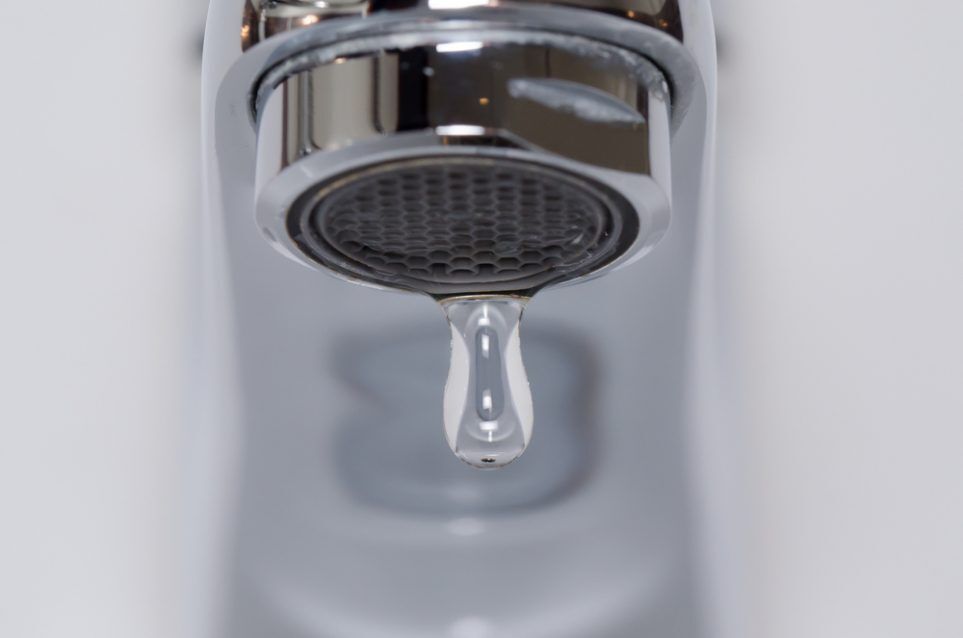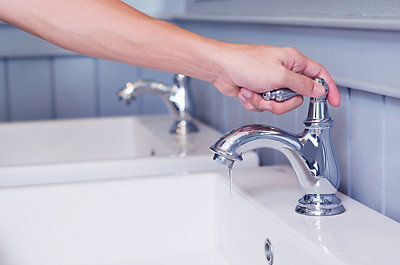Were you trying to find critical info around What Causes Leaky Faucets & How To Fix Them?

Leaking faucets may look like a minor inconvenience, yet their influence exceeds just the inconvenience of the sound. From drainage to sustaining unnecessary financial costs and wellness dangers, neglecting a leaking faucet can lead to numerous repercussions. In this short article, we'll delve into why it's critical to resolve this typical household concern immediately and efficiently.
Wastage of Water
Ecological Influence
Dripping taps add considerably to water wastefulness. According to the Epa (EPA), a single tap dripping at one drip per secondly can lose more than 3,000 gallons of water each year. This not only pressures water resources yet likewise affects ecological communities and wildlife dependent on them.
Step-by-Step Overview to Fixing a Dripping Tap
Tools Needed
Before trying to fix a trickling faucet, collect the required devices, including a flexible wrench, screwdrivers, replacement components (such as washers or cartridges), and plumber's tape.
Typical Tap Issues and Their Solutions
Determine the sort of faucet and the details problem creating the drip. Common troubles consist of damaged washers, rusty valve seats, or malfunctioning O-rings. Refer to maker instructions or on the internet tutorials for detailed assistance on fixings.
Financial Costs
Boosted Water Costs
Beyond the ecological impact, leaking taps can inflate water expenses considerably. The accumulated waste with time translates into greater energy expenses, which can have been stayed clear of with timely repair services.
Possible Residential Property Damages
Moreover, extended trickling can bring about damage to fixtures and surfaces bordering the tap. Water accumulation can cause staining, deterioration, and also structural concerns if left unattended, causing additional repair service costs.
Wellness Issues
Mold and Mildew Growth
The continuous existence of dampness from a trickling tap develops an ideal atmosphere for mold and mildew and mold growth. These fungi not only jeopardize interior air quality but additionally posture health and wellness dangers, specifically for people with respiratory system problems or allergic reactions.
Waterborne Illness
Stagnant water in dripping faucets can become a breeding ground for bacteria and other pathogens, enhancing the risk of waterborne diseases. Contaminants such as Legionella bacteria thrive in stationary water, possibly causing serious illnesses when consumed or breathed in.
Do it yourself vs. Expert Repair work
Advantages and disadvantages of DIY Repair Work
While some may try to deal with a trickling faucet themselves, DIY repairs feature their very own collection of difficulties. Without proper knowledge and devices, do it yourself attempts can exacerbate the concern or cause incomplete repair work, prolonging the trouble.
Advantages of Hiring a Professional Plumber
Working with a specialist plumber guarantees that the underlying cause of the trickling tap is dealt with effectively. Plumbing professionals have the competence and equipment to detect and repair tap problems efficiently, conserving time and lessening the risk of more damage.
Ecological Obligation
Individual Payment to Conservation
Taking duty for repairing trickling taps aligns with wider efforts towards water conservation and ecological sustainability. Every individual's activities collectively make a considerable impact on protecting precious resources.
Lasting Living Practices
By prioritizing punctual repair work and taking on water-saving practices, people contribute to sustainable living techniques that benefit both existing and future generations.
Preventive Measures
Normal Maintenance Tips
To avoid trickling faucets, do regular maintenance such as cleansing aerators, inspecting for leakages, and changing worn-out parts without delay. Furthermore, consider setting up water-saving tools or upgrading to a lot more reliable fixtures.
Significance of Prompt Services
Addressing leaking taps as quickly as they're noticed stops more water wastage and prospective damages, inevitably saving both water and money over time.
Influence On Home Worth
Assumption of Well-Maintained Property
Preserving a building in good condition, including addressing maintenance problems like leaking taps, boosts its perceived value and desirability among potential buyers or renters.
Influence on Resale Value
Qualities with properly maintained plumbing components, consisting of taps, command greater resale worths in the property market. Dealing with leaking faucets can contribute to a positive impression during home assessments and settlements.
Final thought
Attending to a leaking faucet goes beyond mere convenience; it's an essential step toward conserving water, lowering economic expenses, and securing health and wellness and home. Whether with DIY repairs or professional assistance, taking action to deal with trickling taps is a tiny yet impactful way to promote liable stewardship of sources and add to a healthier, a lot more lasting future.
How to Fix a Leaky Faucet: Step-by-Step Repair Guide
A leaky faucet may seem like a simple annoyance, but if it's not fixed promptly, that leak could cost hundreds to potentially thousands. From water damage to mold, mildew, and high water bills, even a tiny leak can be catastrophic if left unattended. Damage like this can even affect the overall value of your home, so it's important to take the right approach for leaky faucet repair. You may need the help of a plumber in some cases, but we've got a few tips you can try on how to fix a leaky faucet before calling the pros.
Four Faucet Types
When you're learning how to fix a leaky faucet, the first step is knowing what kind of faucet you're working with! There are four common types.
Cartridge Faucets
Cartridge faucets come in one- or two-handled varieties. In one-handled cartridge faucets, hot and cold water combines in a single cartridge. In the two-handled versions, hot and cold water are controlled separately and mixed in the faucet.
Ball Faucets
Ball faucets have a single lever you push up and down to adjust the pressure and rotate to change the temperature. A slotted metal ball controls the amount of water allowed into the spout.
Compression Washer Faucets
They're the oldest type of faucet, but they're still used in many homes — especially older ones. Compression faucets have two separate handles that, when turned, raise or lower the washer that seals a water valve. This valve stops water from flowing through the faucet when it is turned off.
Disc Faucets
Disc faucets rarely need to be repaired due to their maintenance-free design. The water flow is controlled by two discs — the upper one raises and lowers against a fixed lower disc, creating a watertight seal. If your disc faucet starts leaking, you may need to replace the seals or clean residue buildup from the inlets.
Fixing a Leaky Faucet
Step 1: Turn Off the Water
Whether you're learning how to fix a leaky bathtub faucet or how to fix a leaky kitchen faucet, always turn off the water supply to your working area when you're fixing a leak. The last thing you want is a flood added to your list of things to fix.
Look for the shutoff valves below your sink or around the tub and turn them clockwise to stop the water flow. If your faucet doesn't have shutoff valves, you may need to turn off the water for the whole house. Check to make sure it's off by turning the faucet on. If nothing comes out, you're ready to start the repair.
Step 2: Take Apart the Faucet
How you disassemble your faucet depends on the type of fixture you have. You can use a flathead screwdriver to remove the caps on top of the handle or handles for cartridge and compression faucets. Inside, you should see handle screws. Unscrew these with a screwdriver to remove the handle.
Disc- and ball-style faucets will typically have an inlet screw near the handle, and removing that will reveal the interior of the faucet.
Detach the Valve Stem
For cartridge- and compression-style faucets, you'll see the inner valve stem or cartridge once you remove the faucet handles. If you have a compression faucet, unscrew the brass valve stem. If you have a cartridge faucet, pull out the cartridge. If your cartridge has been in place for a while, it may require some tools or extra force to remove it due to mineral deposits.
Examine and Replace Parts
Once you've removed the parts, check them out to confirm what needs to be replaced. You may see corroded rubber washers, O-rings, stems, or cartridges. On a ball-style faucet, check the seats and springs for damage.
If you need to repair a leaky disc faucet, check the inlet and seals on the lower disc.
Once you determine what parts must be replaced, visit your local hardware store. Bring the damaged parts with you to ensure you can purchase the correct components to replace them.
Clean Valves and Faucet Cavity
If you've removed a stem or cartridge, you may notice mineral buildup in the faucet's threads. Use white vinegar to clean the valve seat by soaking it for a few minutes, then scrub it away with a soft toothbrush and rinse with warm water. You can also clean the interior of the faucet in the same way.
Reassemble the Faucet
Once your faucet is cleaned and the required parts have been replaced, it's time to reassemble it. Put the pieces back together and slowly turn the water supply back on. Doing this slowly is crucial because too much initial water pressure can damage the new hardware you've just installed.
https://homewarranty.firstam.com/blog/how-to-fix-leaky-faucet

I am just very serious about How to Fix a Dripping or Leaky Faucet and I'm hoping you enjoyed reading my blog post. If you liked our blog post plz consider to pass it around. I recognize the value of your readership.
Comments on “The Relevance of Addressing a Faulty Faucet”